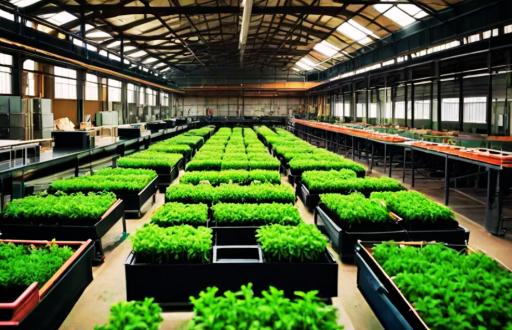How Eco-Friendly Production Fashion
In an era where sustainability is no longer just a buzzword but a necessity, the fashion industry is undergoing a seismic shift. The traditional methods of production, often criticized for their environmental impact, are being reimagined through innovative, eco-friendly production methods. This transformation is not merely a trend; it’s a revolution that intertwines ethics with aesthetics, creating a new paradigm for how we perceive fashion.

The Rise of Green Manufacturing
Green manufacturing is at the forefront of this transformation. It encompasses a range of practices aimed at reducing waste, conserving energy, and minimizing the carbon footprint associated with clothing production. But what does this really mean?
Imagine a world where the fabric of your favorite shirt is not only stylish but also crafted from organic cotton, dyed with natural pigments, and produced in a facility powered by renewable energy. This is the essence of green manufacturing—a holistic approach that prioritizes the planet without compromising on quality or design.
Innovative Materials: The Heart of Eco-Friendly Production
One of the most exciting aspects of eco-friendly production is the emergence of innovative materials. Designers and manufacturers are increasingly turning to sustainable alternatives that challenge the status quo.
For instance, fabrics made from recycled plastics, such as rPET (recycled polyethylene terephthalate), are gaining traction. These materials not only divert waste from landfills but also reduce the need for virgin resources.
Moreover, natural fibers like Tencel, derived from sustainably sourced wood pulp, are becoming popular for their biodegradability and low environmental impact. The use of such materials signifies a shift towards a circular economy, where products are designed with their entire lifecycle in mind.
The Role of Technology in Sustainable Fashion
Technology plays a pivotal role in the evolution of eco-friendly production methods. Advanced manufacturing techniques, such as 3D printing and digital knitting, allow for precise production that minimizes waste.
These technologies enable brands to create on-demand, reducing overproduction—a significant issue in the fashion industry.
Additionally, blockchain technology is being utilized to enhance transparency in the supply chain. Consumers can now trace the origins of their garments, ensuring that they are supporting brands that adhere to ethical practices. This level of transparency fosters trust and encourages more conscious consumerism.

Consumer Awareness and Demand
As awareness of environmental issues grows, so does consumer demand for sustainable fashion. Shoppers are increasingly seeking out brands that align with their values, pushing companies to adopt eco-friendly production methods.
This shift is not just a fleeting trend; it represents a fundamental change in consumer behavior.
Brands that embrace sustainability are not only appealing to eco-conscious consumers but are also setting themselves apart in a crowded marketplace. The narrative surrounding fashion is evolving—no longer is it solely about style; it’s about making informed choices that contribute to a healthier planet.
Conclusion
The transformation of the fashion industry through eco-friendly production methods is a testament to the power of innovation and consumer demand. As green manufacturing practices continue to gain momentum, the industry is poised for a future where sustainability is the norm rather than the exception.
By embracing innovative materials, leveraging technology, and fostering transparency, the fashion world is not just changing its production processes; it is redefining its very identity.
In this new landscape, every garment tells a story—one of responsibility, creativity, and hope for a sustainable future. As consumers, we hold the power to drive this change. By choosing eco-friendly options, we can collectively contribute to a fashion industry that respects both people and the planet.
FAQ
Q1: What are eco-friendly production methods?
A1: Eco-friendly production methods refer to practices that minimize environmental impact during the manufacturing process. This includes using sustainable materials, reducing waste, conserving energy, and ensuring ethical labor practices.
Q2: How does green manufacturing benefit the environment?
A2: Green manufacturing reduces pollution, conserves natural resources, and minimizes waste. By adopting sustainable practices, manufacturers can significantly lower their carbon footprint and contribute to a healthier planet.
Q3: What materials are considered sustainable in fashion?
A3: Sustainable materials include organic cotton, Tencel, hemp, and recycled fabrics like rPET. These materials are sourced responsibly and often have a lower environmental impact compared to conventional textiles.
Q4: How can consumers support eco-friendly fashion?
A4: Consumers can support eco-friendly fashion by choosing brands that prioritize sustainability, purchasing second-hand clothing, and being mindful of their consumption habits. Every conscious choice contributes to a more sustainable fashion industry.
Q5: Is sustainable fashion more expensive?
A5: While sustainable fashion can sometimes come with a higher price tag due to ethical sourcing and production practices, many consumers find value in investing in quality pieces that last longer and have a lower environmental impact.






